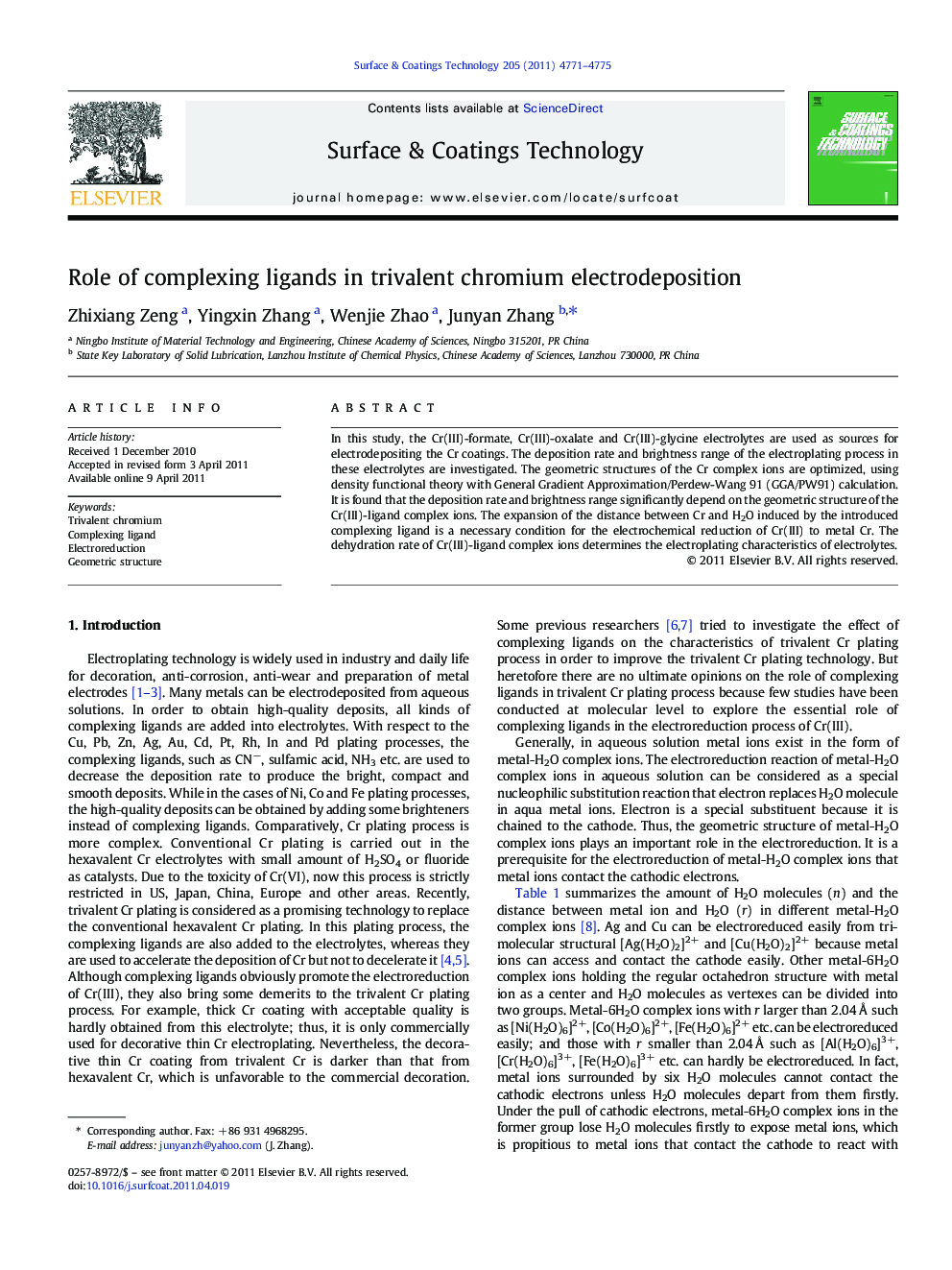| Article ID | Journal | Published Year | Pages | File Type |
|---|---|---|---|---|
| 1658636 | Surface and Coatings Technology | 2011 | 5 Pages |
In this study, the Cr(III)-formate, Cr(III)-oxalate and Cr(III)-glycine electrolytes are used as sources for electrodepositing the Cr coatings. The deposition rate and brightness range of the electroplating process in these electrolytes are investigated. The geometric structures of the Cr complex ions are optimized, using density functional theory with General Gradient Approximation/Perdew-Wang 91 (GGA/PW91) calculation. It is found that the deposition rate and brightness range significantly depend on the geometric structure of the Cr(III)-ligand complex ions. The expansion of the distance between Cr and H2O induced by the introduced complexing ligand is a necessary condition for the electrochemical reduction of Cr(III) to metal Cr. The dehydration rate of Cr(III)-ligand complex ions determines the electroplating characteristics of electrolytes.
Research highlights► We reveal the role of ligands in Cr(III) electroplating at molecular level. ► Ligands induce the expansion of Cr3+-H2O distance to promote the dehydration of Cr complex ions. ► The dehydration rate determines the electroplating process. ► The results provide deep insights about the electroreduction of Cr(III).
